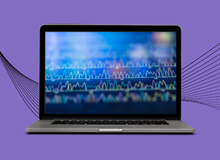PCR Purification
GENEWIZ PCR Purification service eliminates the need for costly and time-consuming column or gel-extraction clean ups. Our enzymatic PCR clean-up technique removes excess primers and unincorporated dNTPs from PCR sequencing templates prior to the cycle sequencing reaction. Let GENEWIZ from Azenta remove the hassle from PCR clean-up and expedite your PCR product sequencing workflow.
PCR Purification
GENEWIZ offers the added convenience of our PCR Purification service to eliminate the need for costly and time-consuming column or gel-extraction clean ups. Our enzymatic PCR clean-up technique removes excess primers and unincorporated dNTPs from PCR sequencing templates prior to the cycle sequencing reaction. Let GENEWIZ remove the hassle from PCR clean-up and expedite your PCR product sequencing workflow.Place an Order

PCR Clean Up
GENEWIZ uses a combination of enzymes to remove excess dNTPs and oligonucleotides from the PCR reaction prior to sequencing. This approach generates a good-quality template that is ready to sequence, while avoiding common contamination problems from other, column-based purification techniques.
Enzymatic Purification Process

Technical Notes

In order to optimize the concentration of the sequencing reaction, GENEWIZ recommends submitting a representative gel image of your PCR products along with your samples and order receipt.
This approach purifies the entire PCR reaction, and can only be used for single-band PCR products. Occasionally, certain brands of high-fidelity Taq can cause interference with the enzymatic cleanup reaction. Please contact Technical Support if you would like to discuss your specific enzyme selection.
FEATURES & BENEFITS
TECHNICAL RESOURCES

Blog | Analyzing Sanger Sequencing Data
The output for Sanger sequencing is typically a chromatogram, also known as a trace or ab1 file, and a text-based sequence file. Although the latter may seem to hold all the relevant information—after all, the point of sequencing is to get a sequence—the former can’t be ignored. Here, we provide a guide to understanding Sanger sequencing data.

Webinar | From Base Pairs to Breakthroughs: Understanding Sanger and Oxford Nanopore Sequencing
While Sanger sequencing remains the gold standard for accurate DNA sequencing, advancements in sequencing technology, such as Oxford Nanopore Technology (ONT), have provided a cost-effective, long-read alternative for analysis. In this workshop, delve into the considerations of each technique and discover how to interpret their resulting sequencing data effectively so you can capture the benefits of both approaches for your specific needs.

Blog | NGS, qPCR, dPCR, or Sanger Sequencing: An Assay Selection Guide
Today’s molecular biologists have many options to interrogate their genome or transcriptome of interest. Next generation sequencing (NGS), quantitative PCR (qPCR), digital PCR (dPCR), and Sanger sequencing are used widely in genomics; however, choosing the best tool for your project isn’t always intuitive. To learn more about the method best suited for your project goals, use our interactive selection guide as well as the practical information about PCR + Sanger, qPCR, dPCR, and NGS approaches below.

Blog | Troubleshooting DNA Templates with Sanger Sequencing
Sanger sequencing is highly effective for testing small targeted genomic regions and for validating results from NGS. However, as with all sequencing technologies, there are limitations and needs for troubleshooting. Read on to learn about the three basic troubleshooting steps we recommend to start with.
HOW TO ORDER
*Samples must arrive at the GENEWIZ New Jersey laboratory before 10:00 am EST to qualify for Same Day service. Note that direct-sequencing templates are not available for our Same Day service.

